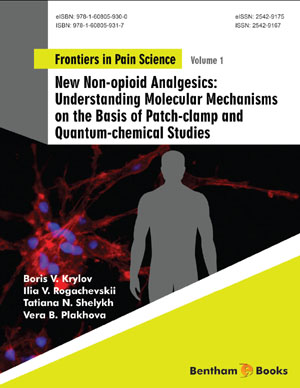Abstract
The nociceptive system codes noxious signals by increasing its impulse firing. NaV1.8 channels play a central role in the process of primary sensory coding. The Almers’ method is almost ideal for the study of behavior of their gating device. Application of this method makes it possible to elucidate the mechanism of receptorcoupled modulation of NaV1.8 channels by opioid-like receptors, which exhibit high affinity to some gamma-pyrone and gamma-pyridone derivatives. A remarkable feature characterizing these substances is their ability to chelate calcium. That is why opioidlike receptors recognize these attacking molecules in physiologically appropriate conditions by activation of a very important additional mechanism of ion-ionic interactions switched on by attacking molecules with chelated calcium. This conclusion is confirmed by the study of the effects of gamma-pyridone derivatives, which are structurally very close to gamma-pyrones and, in addition, also have an ability to chelate calcium.
The results discussed in this and the previous chapters open a new approach to solve the problem of recognition of medicinal analgesic substances. Our quantum-chemical calculations demonstrate that calcium chelation process plays an important role in ligand-receptor binding and it is energetically allowed not only in vacuum but also in the adequate physiological environment. Conclusions concerning the probable structure of opioid-like receptor binding pocket are presented.
Keywords: Ca2+ chelate complex, Gamma-pyridone derivatives, Limiting slope procedure, NaV1.8 channels, Nociception, Opioid-like receptor, Patch-clamp method, Quantum-chemical calculations.






















